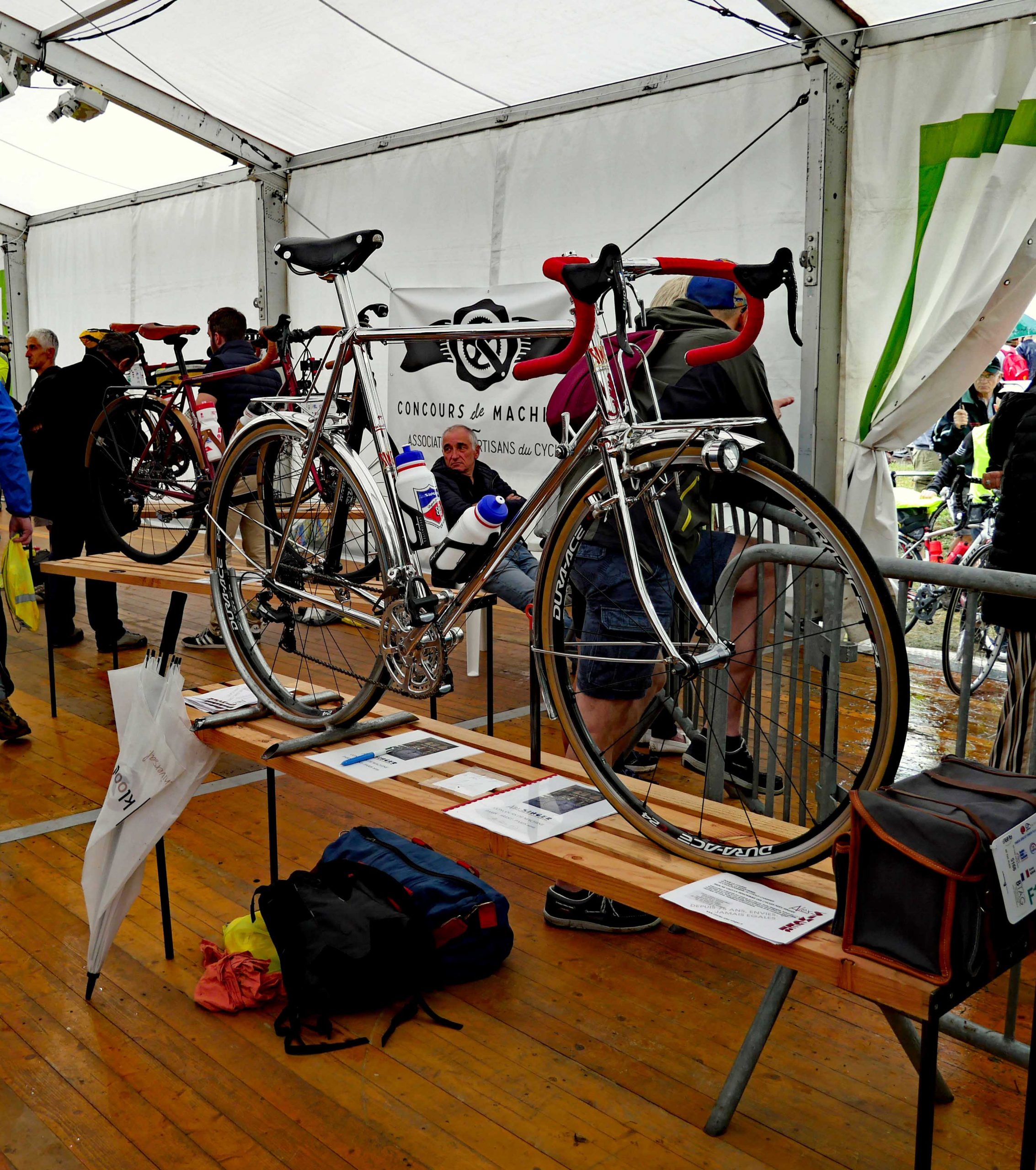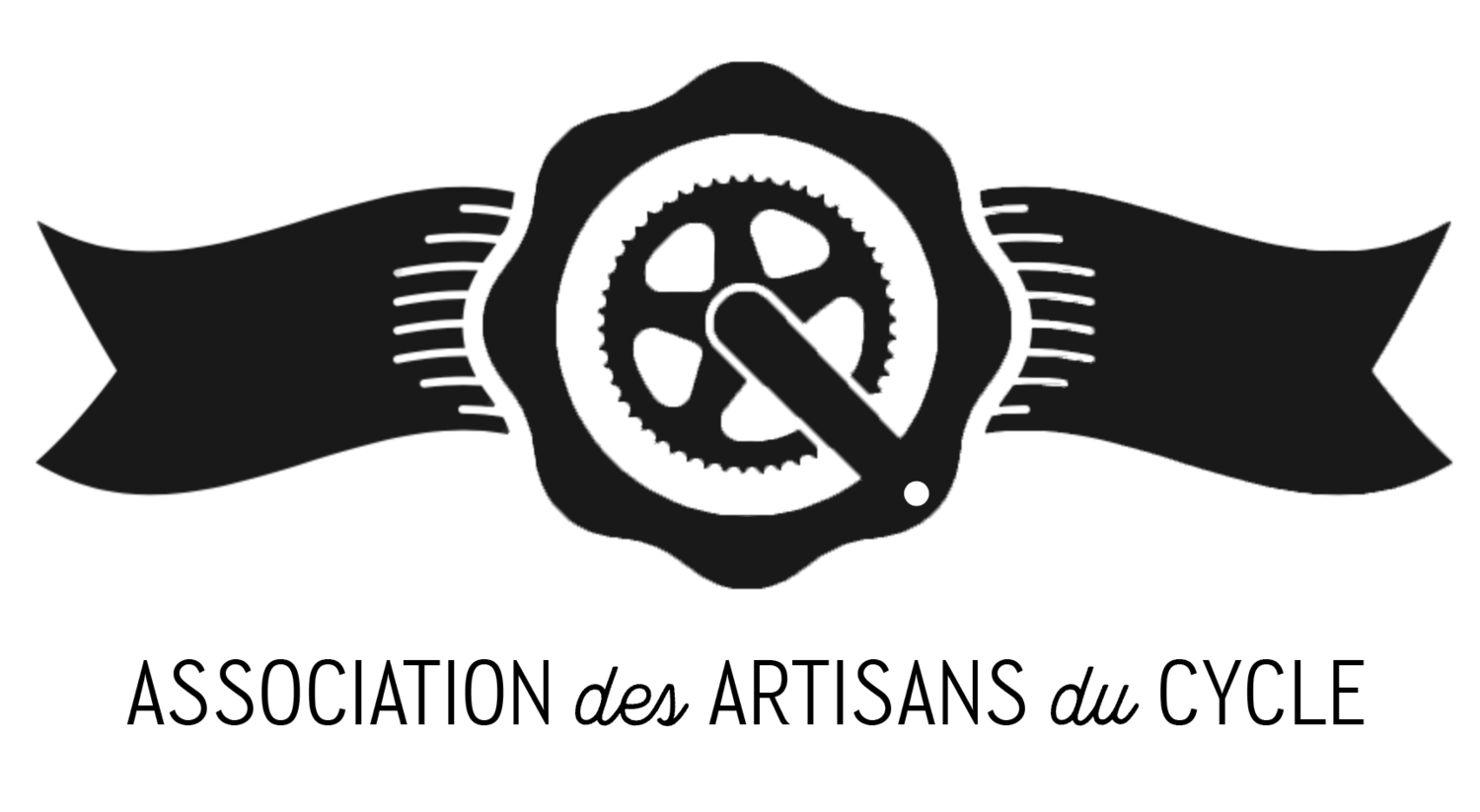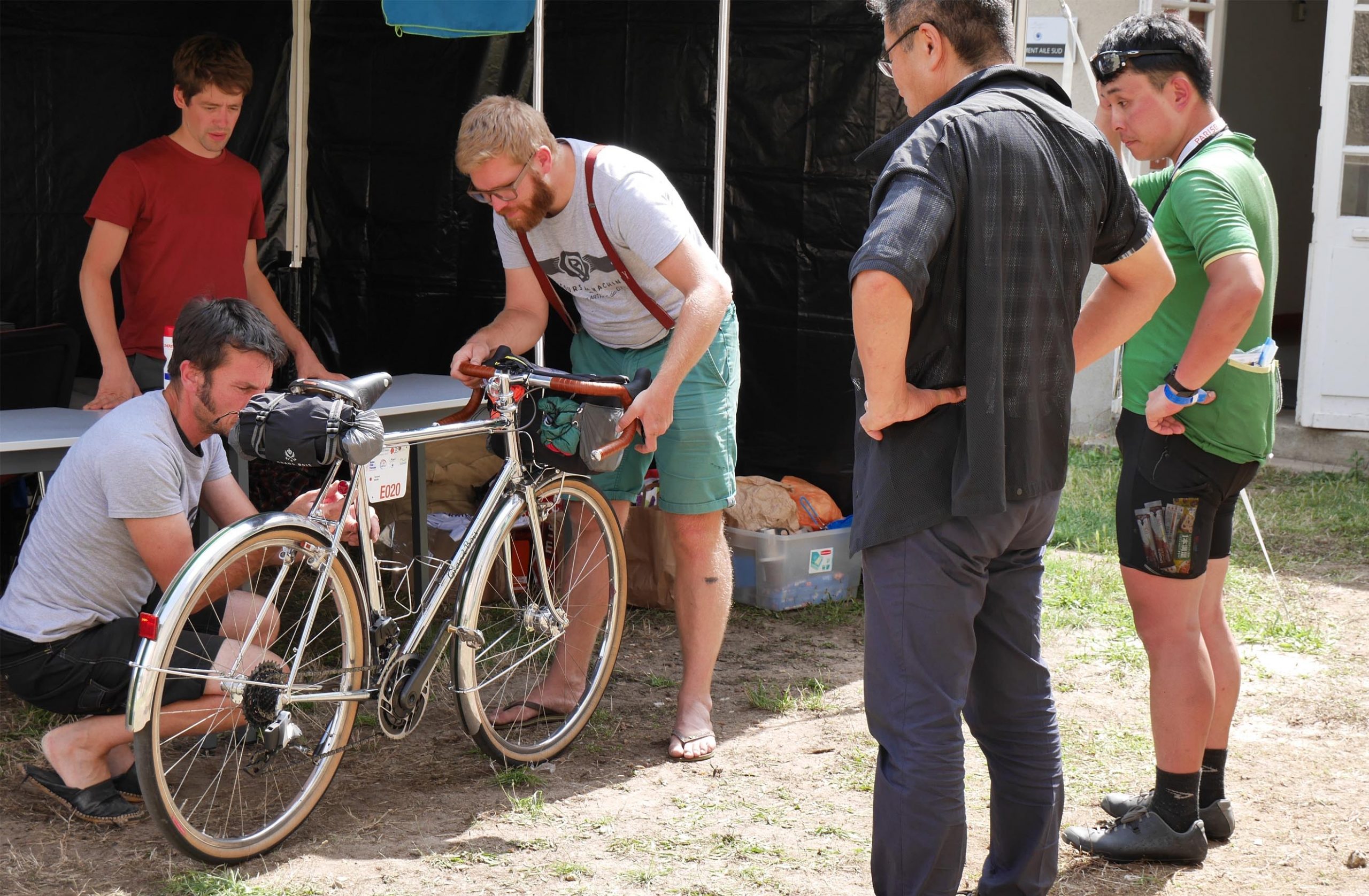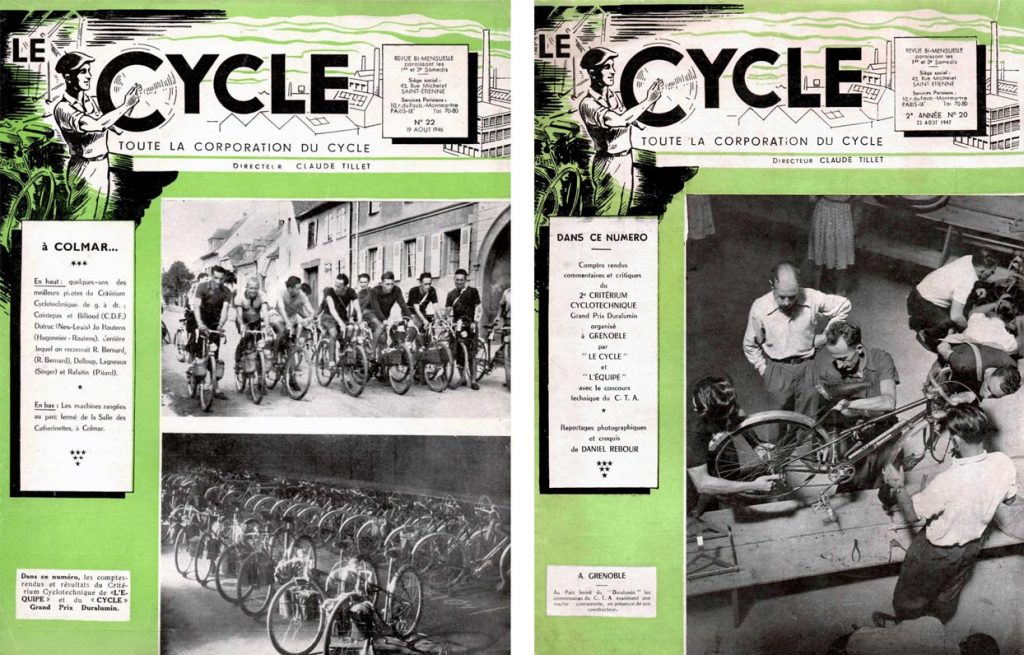Here is an overview of the “Concours de Machines” held in France.
 | Concours de Machines (English : MACHINE’S CONTEST) As an event to compete for handmade bicycle technology, it is operated by “ASSOCIATION DES ARTISANS DU CYCLE”, which is composed of people involved in bicycle production.  https://www.associationartisansducycle.com/ |
|
The teams participating in the competition will manufacture (handmade) bicycles that meet the themes and required specifications presented by the organizer, and participate in and riding. The evaluation of the competition is not limited to the order of arrival ● Ideas ● Manufacturing technology ● Weight (ligheness) ● Production policy ● Durability and Reliability Etc. will be evaluated comprehensively. |
 Bicycle inspection scene after 2019 PBP riding. |

Concours de Machines2019=Paris Brest Paris2019 Start |
The themes presented are diverse and harsh. The 2019 tournament was to participate in Paris-Brest-Paris and ride 1,200km. 2021 tournament is a bike packing tour (Load a set of camping equipment on the bicycle and run through the fields) |
History of Concours de Machines
The current Concours de Machines have been held annually since 2016 (Note: 2020 was canceled due to the affect of Covid19). It looks like a new event, but it’s actually a competition over 100 years of history, first held in 1903 with several breaks.

Left: 1946 Bicycles stored before the race (above) and at Parc Ferme,
Right: J.Routine undergoing a bicycle inspection before the start of the race in 1947
While bicycle races such as road races receive team support and compete only in order of arrival, support is prohibited during riding. It is necessary for the rider to deal with obstacles such as breakdowns and reach the goal. In addition, damage to bicycles and parts will be deducted, so high durability, reliability and weight reduction are required.
In addition, lighting device is essential because it runs day and night. Repair supplies, tools, food, and water that are needed on the way. The bicycle and rider must carry it by themselves, and bags to store them and racks to attach to the bicycle are required.
In the 1930s, the front gear of the participants’ bicycles of the Tour de France was still mainly single gear, but Concours de Machines had already adopted the front double. In the 1940s, some bicycles used duralumin as the frame material, and some had a body weight in the 10 kg range.

Famous French builders (A.Singer, Goeland, J.Routine, Rene Hese, etc.) have participated in this event and have worked hard with each other to create excellent bicycles. It is said that the style of “Landner”, which is also popular in Japan, was also formed by this event.

 Japanese
Japanese